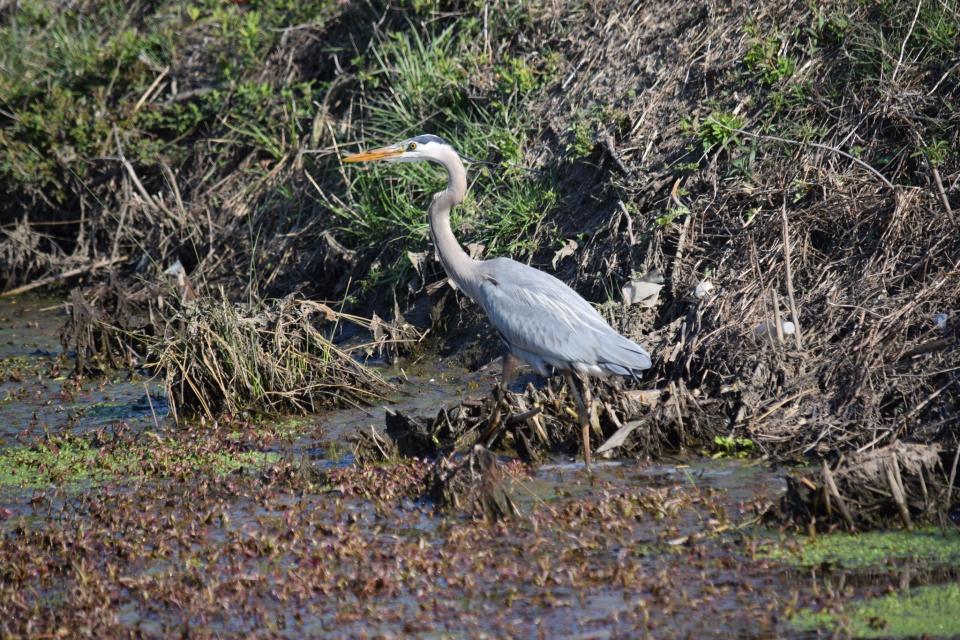Delaware is the only state in the Mid-Atlantic region without statewide wetland protections. That could soon change.
Senate Bill 290 was introduced in the General Assembly last month, aiming to protect a fragile ecosystem that makes up over 25% of the state’s land.
In the wake of stripped federal regulations, over half of Delaware’s wetlands are in jeopardy of being exposed to development or other harmful activities.
Here’s what to know.
Delaware’s vast, unprotected wetlands
Delaware is home to many unique types of wetlands, but most can be categorized into one of two umbrellas: tidal and nontidal wetlands.
Nontidal wetlands are made up of fresh water and are usually found around inland areas. Their water levels change throughout the year but are not supplemented with tidal water. Tidal wetlands are found at the intersection of a body of water such as an ocean, bay or river and the land. Often referred to as marshes, the daily tidal cycles are what contribute to water levels throughout the year.
Conserving and restoring wetlands has been a major goal for environmentalists in Delaware. Healthy wetlands can filter stormwater runoff and harmful bacteria, as well as acting as a barrier to coastal flood events. They also are some of the most biodiverse habitats in the country.
Seventy-five percent of Delaware’s wetlands are nontidal. Delaware’s Department of Natural Resources and Environmental Control assesses them regularly, but only non-tidal wetlands of 400 acres or more are regulated by the state.
The federal government has gone back and forth as to what types of wetlands constitute “Waters of the United States”, which are protected under the Clean Water Act. In a Supreme Court decision last year, Sackett v. EPA, the court’s decision limited this definition further, leaving millions of acres of wetlands around the country unprotected from development, dredging or other harmful activities.
In Delaware, this led to an estimated 75,000 acres of nontidal wetlands that are no longer protected under federal jurisdiction.
This is on top of the wetland acreage that has already been lost or damaged in the state. Nearly one-quarter of Delaware’s land is considered a wetland, and in the past two centuries over half of these lands have been lost.
“Much of the wetlands of this State have been lost or despoiled by unregulated dredging, dumping, filling and like activities,” the Senate Bill’s text states. “… The remaining wetlands of the State are in jeopardy of being lost or despoiled. … Such loss will adversely affect, if not entirely eliminate, the value of such wetlands.”
Each summer, a DNREC field crew assesses the health of the state’s wetlands. According to its most recent data, only a small portion of the state’s wetlands are in fair condition. The Christina watershed, which spans Newark, Christiana and Wilmington, showed the worst wetland health in the state.
What does Senate Bill 290 say?

Delaware is the only state in the Mid-Atlantic region without state-level protections for its wetlands, and thus is especially vulnerable to changes at the federal level. Previously, the state has relied on federal regulations enforced by the U.S. Army Corps of Engineers.
Senate Bill 290 amends the portion of the Delaware Code relating to the protection of wetlands, and broadens procedures to include both tidal and non-tidal wetlands.
The bill calls on DNREC to institute a statewide non-tidal wetlands program that follows much of the same procedures already in place for tidal wetlands, requiring a permit authorized by the Secretary of DNREC to be issued before any development, dredging, drilling, excavation or other activities that could impact the ecosystems, with the exception of farming activities, hunting, fishing, mosquito control and like actions.
The goal stated in the bill is to achieve “no net overall loss in wetland acreage and function and strive for a net resource gain in wetlands over present conditions.”
Saving the Swamp: Restoration at Great Cypress Swamp after centuries of timbering, fires and draining
Offshore update: Upcoming public information sessions on Delaware’s offshore wind projects
“As our communities continue to deal with increased flooding, drainage issues and habitat loss, protecting our remaining non-tidal wetlands – one of our state’s most valuable ecosystems and assets – is more important now than ever,” said Rep. Debra Heffernan, chair of the House Health & Human Development Committee and House prime sponsor of SB2090. “Many of our neighboring states have already enacted protective measures for their own non-tidal wetlands, and Delaware cannot afford to lag behind. It’s time that we take action to do the same for the benefit of our environment and for present and future generations of Delawareans.”
SB 290 has been assigned to the Senate Environment, Energy and Transportation Committee.
Molly McVety covers community and environmental issues around Delaware. Contact her at mmcvety@delawareonline.com. Follow her on Twitter @mollymcvety.
This article originally appeared on Delaware News Journal: Delaware aims to protect its wetlands in new bill. Here’s what to know
Signup bonus from




